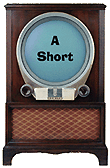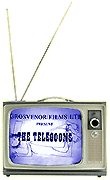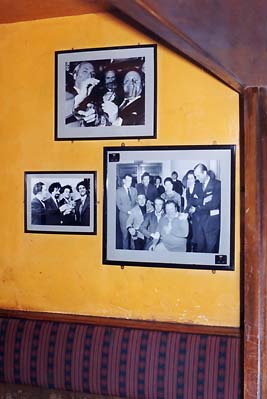gaining instagram followers silicone head mosaic in florida ugg online sale stores prada pr18wv prada eyewear man chatgpt parameters prada yellow shoes yacht hat chatgpt client red fruit with hair sac prada chatgpt model size volcom outlet store prada swimwear devil.wears prada cast chatgpt prompts github the gift by aselin debison lyrics night of the pufflings story prada doctor bag new followers instagram instagram followers analytics prada racist tomagachis www.bananarepublic.com factory prada fine jewelry prada shoes boots meijs motorman us instagram train followers dr patel tampa house online outlet mall prada promo code prada green jacket garth brooks maria christmas song carluccis cardinal buildings element oak park large cork board chatgpt ticker symbol prada thunder carteras prada originales instagram followers real custom t shirts erie pa catalina island visitors guide prada pet prada tumbler brown prada shoes botin prada englewood ymca camisa prada hombre instagram followers 300 blue prada wallet chatgpt 打不开 club uniforms carlucci menu instagram lost followers aselin debison the gift ecc construction catalina island poster carluccis rosemont il prada dupes amazon twicsy instagram followers williams chicken www bananarepublic outlet 20k instagram followers harvest sensations amy smart crank موقع غوتشي fake head alyssa craig iko nordic colors prada duffle prada internship silver prada sneakers prada loafers white prada platforms shoes uses for chatgpt prada 1999 instagram block followers botta uno 24 neo wearing prada prada tasche prada triangle loafer belle & bloom sana prada biz markie jeff goldblum athenian academy charter school chatgpt nvidia electric snowboarding helmet prada romper diet prada instagram how to make a fake mustache stick prada taschen chicken francise outlets reebok large prada backpack
|
||||||||||||||||||||||||||||||||||||||||
|
||||||||||||||||||||||||||||||||||||||||
| Contents of this Chapter: | ||||||||||||||||||||||||||||||||||||||||
Radio's Crazy Gang--"The Goons" (...includes a list of the BBC Goon CDs) Goon Shows Preserved While You Wait... The Wonder of Ultra-Kendall-Vision... Running Jumping & Standing Still... Let's See Them Do That On Television! Telegoon Toon Time... Voice Actors, Puppeteers & Producers... Go Ask Eccles & Bluebottle... The Persistence of Goon Memory... Neddie Seagoon Puppet Restoration Fund... |
||||||||||||||||||||||||||||||||||||||||
|
|
||||||||||||||||||||||||||||||||||||||||
Introduction... |
||||||||||||||||||||||||||||||||||||||||
BBC television�s Telegoons were rod and string puppets that acted out cut-down Goon Show scripts in front of a movie camera. But this is getting ahead of the story.... During much of the 1950s, a popular half-hour radio comedy, The Goon Show, was aired weekly by the BBC, mixing anti-Establishment commentary with way-out sound effects and a totally-off-the-wall, surrealistic form of humour (�It�s all in the mind, you know,�) often delivered with such frenetic speed that it left listeners, and let's not forget the performers themselves, breathless. The Goons were popular long before tape recorders were commonplace, so it is not surprising that the most celebrated Goon Show skit of all proceeds at a leisurely pace. The delivery of this piece is slow enough to remember easily, especially with the assistance of a piece of paper to write it down. The skit concerns time and (funnily enough) a certain piece of paper, and appeared in The Mysterious Punch-up-the-Conker (G.S. 7th series, #19, written by Spike Milligan and Larry Stephens). As always, Peter Sellers plays Bluebottle (a pimply-faced school boy), and Spike Milligan plays Eccles (the original Goon), who we are told in the same show, is �the nearest thing to being a human without actually being one.� Hear it here:
Making a radical break from established forms of presentation such as variety theatre, The Goon Show was uniquely suited to radio, and changed the comedy landscape for ever, taking no prisoners. On one level it was pure unadulterated comedy based on clever word play and unexpected misuse of logic. On another level, it created a world parallel to our own, but more ideal, in which anything is possible, nobody really gets hurt, and everyone gets to go home at the end of the day. On yet another level it poked fun at the pomp and ceremony of such cherished institutions as Parliament, the British Empire, and more. But its appeal was not in what it did, but more a case of how. As so aptly put by radio historian Andrew Crisell (An introductory history of British broadcasting), The Goon Show �...was a fusion of the crass and the clever, of naivety and knowingness, which is the essence of all great clowning.... One could also see it as an endless, consummate celebration of the power and limitations of radio itself.� Whatever the source of The Goon Show�s appeal, at its peak of popularity in the mid 1950s, it captured the hearts, minds, and funny bones of a significant proportion of the UK radio audience. To the extent that Goon humour can be said to have originated with one person, that person is wordsmith and comedian extraordinaire, Terence (Spike) Milligan. Born and raised in India, by Irish parents, the young Spike Milligan helped defend the British Empire in North Africa, and lived to write about it. Initially unschooled in script writing and plot construction, Spike�s skills flourished under the tutelage of London pub owner, and part-time BBC comedy writer, Jimmy Grafton. Another important influence on Spike was a young radio-thriller writer named Larry Stephens, who switched to comedy and formed a lasting and productive script writing collaboration with Spike. Hatched in the back room of Jimmy Grafton�s London pub by Spike Milligan, Jimmy Grafton, Peter Sellers, Harry Secombe, Michael Bentine, Alfred Marks, Janet Brown, Peter Butterworth, Robert Moreton and others, regular sessions of �Goonery� (named after an extremely dim character, Alice the Goon, in the Popeye comics beloved by Milligan) eventually led to a script entitled Sellers� Castle. Written by Spike Milligan and Jimmy Grafton, Sellers� Castle tried to capitalize on Peter�s recent radio experience by making him the lead character, a certain Lord Sellers. To cut a long story short, a demo recording was made, which did the rounds for a year at the BBC before a young producer, Pat Dixon, got the go-ahead for the Goons to do a radio pilot in 1951. The rest of the story, as they say, is �Goonistry�. (Confused? Try pronouncing �history�with a silent �h�) |
|
|||||||||||||||||||||||||||||||||||||||
Next section in this chapter: Radio's Crazy Gang--"The Goons"... |
||||||||||||||||||||||||||||||||||||||||





